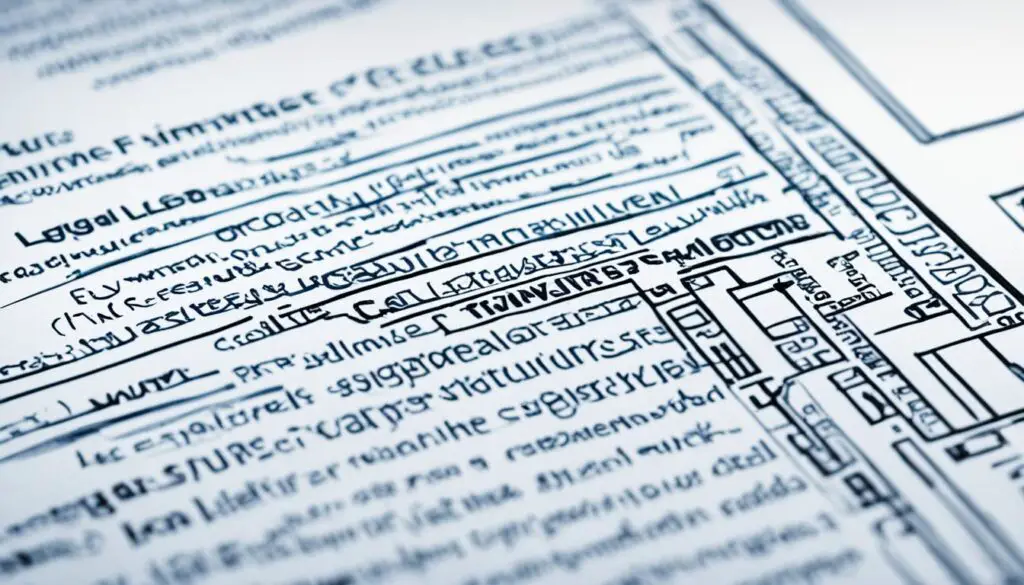
The use of electronic signatures, also known as e-signatures, is becoming increasingly common in today’s digital world. However, as with any legal matter, there are specific considerations and complexities that individuals and businesses must navigate to ensure that their digital signings are valid and enforceable. In this section, we will explore the various legal issues surrounding e-signatures and provide insights on how to address them effectively.
When it comes to digital signings, it is crucial to understand the legal framework that governs their use. In the United States, the primary legislation for e-signatures is the Electronic Signatures in Global and National Commerce (E-SIGN) Act and the Uniform Electronic Transactions Act (UETA). These laws establish the legal basis for the use of electronic signatures and recognize their validity and enforceability.
Compliance with e-signature requirements is essential to ensure the validity of digital signings. Key requirements typically include proper authentication of signatories, clear and informed consent from all parties involved, and accurate record retention. It is also essential to consider any industry-specific regulations and compliance standards that may apply to your business.
Ensuring the security of electronic transactions is paramount in today’s digital landscape. Implementing robust security measures, such as encryption and secure data storage, can help mitigate risks associated with unauthorized access and tampering of digital documents. Staying informed about the latest cybersecurity developments and adhering to industry best practices further enhances the protection of sensitive information and the integrity of e-signature processes.
Key Takeaways:
- Electronic signatures, or e-signatures, are increasingly common in digital transactions.
- Understanding the legal framework, including the E-SIGN Act and UETA, is crucial for the validity and enforceability of digital signings.
- Compliance with e-signature requirements, such as authentication, consent, and record retention, is necessary for legally binding electronic transactions.
- Implementing robust security measures, such as encryption and data protection, helps mitigate risks and ensures the integrity of e-signature processes.
- Staying informed about cybersecurity developments and industry best practices is essential to safeguard sensitive information.
Understanding the Legal Framework for E-Signatures
In the world of digital transactions, understanding the legal framework for e-signatures is crucial to ensure the validity and enforceability of electronic agreements. In the United States, the legal landscape is shaped by two key laws: the Electronic Signatures in Global and National Commerce (E-SIGN) Act and the Uniform Electronic Transactions Act (UETA).
Enacted in 2000, the E-SIGN Act provides a comprehensive legal basis for the use of electronic signatures in interstate commerce. It establishes the recognition of electronic signatures as legally equivalent to traditional signatures, granting them the same standing and enforceability. This landmark legislation serves as the foundation for e-signature practices across the country.
At the state level, the Uniform Electronic Transactions Act (UETA) complements the E-SIGN Act by establishing a framework for e-signatures within individual states. While UETA varies in its specific provisions from state to state, its primary aim is to harmonize electronic transactions and provide a consistent legal basis for e-signatures.
“The E-SIGN Act and UETA have greatly facilitated the adoption of electronic signatures by businesses, ensuring the legal validity and enforceability of digital agreements.”
Together, these laws form the legal framework that enables the use of e-signatures across the United States. They offer businesses and individuals the confidence they need to embrace digital transactions while ensuring compliance with legal requirements.
Benefits of the Legal Framework for E-Signatures
The legal framework provided by the E-SIGN Act and UETA offers several key benefits:
- Recognition of electronic signatures: Both laws explicitly recognize electronic signatures as legally valid and enforceable, providing the same legal weight as traditional handwritten signatures.
- Interstate consistency: The E-SIGN Act establishes uniform standards for e-signatures in interstate commerce, ensuring consistent legal treatment regardless of the location of the parties involved.
- State-level guidance: UETA fills in the gaps and provides specific guidelines for e-signatures at the state level, helping businesses navigate state-based variations in electronic transaction laws.
- Enhanced efficiency: By embracing e-signatures, businesses can streamline their processes, reducing paperwork, and accelerating transaction cycles.
- Cost savings: E-signatures eliminate the need for physical delivery and storage of documents, resulting in significant cost savings for businesses.
The legal framework for e-signatures provides the necessary clarity and support for businesses and individuals to confidently adopt digital signing methods. With legal recognition and enforceability, e-signatures have become an integral part of modern commerce and have transformed the way agreements are made.
| E-SIGN Act | UETA | |
|---|---|---|
| Year Enacted | 2000 | 1999 |
| Scope | Nationwide | State-level |
| Main Purpose | Establish legal basis for e-signatures in interstate commerce | Establish uniform framework for e-signatures at the state level |
| Recognition of Electronic Signatures | Legally equivalent to traditional signatures | Legally equivalent to traditional signatures |
Compliance with E-Signature Requirements
Ensuring compliance with e-signature requirements is essential to validate the legality and enforceability of digital signings. To meet these requirements, several key factors need to be considered.
Authentication of Signatories
Proper authentication of signatories is crucial to verify the identity of individuals who are digitally signing documents. This helps establish the integrity of the electronic transaction and ensures that it is not susceptible to fraud or unauthorized access. Utilizing secure authentication methods, such as two-factor authentication or digital certificates, can enhance the credibility and trustworthiness of e-signatures.
Obtaining Clear and Informed Consent
Obtaining clear and informed consent from all parties involved is vital to validate the intent and understanding of the individuals signing the document. Consent should be given willingly, without any coercion or misrepresentation. Including clear language in the e-signature process that outlines the rights and responsibilities of the signatories can help ensure that consent is obtained in a transparent and legally compliant manner.
“Consent is the foundation of any legally binding agreement. It is crucial to create a seamless and user-friendly consent process in the e-signature workflow to ensure compliance with legal requirements and foster trust among signatories.”
Record Retention
Accurate record retention is essential to demonstrate the validity and enforceability of digital signings. Keeping detailed records of the electronic transactions, including the signed documents, timestamps, and audit trails, helps provide a complete and reliable record of the agreement. Adhering to industry-specific record retention requirements and implementing secure storage solutions can further ensure the integrity and accessibility of the records.
By adhering to these e-signature requirements, businesses can enhance the legal validity of their digital signings, protect the rights of all parties involved, and promote trust in electronic transactions.
Mitigating Risks and Ensuring Security
As the use of e-signatures continues to grow, it is imperative to prioritize the security of electronic transactions. To safeguard sensitive information and protect against unauthorized access, robust security measures must be implemented.
One key security measure is encryption, which involves encoding data to make it unreadable to unauthorized individuals. By utilizing strong encryption algorithms, e-signature solutions can prevent the interception and tampering of digital documents, ensuring the integrity and confidentiality of the information being transmitted.
Another vital aspect of security is secure data storage. Storing electronic documents in secure environments with controlled access helps prevent data breaches and unauthorized alterations. Employing industry-best practices for data protection, such as regular backups and restricted user permissions, enhances the overall security of e-signature processes.
In addition to these security measures, keeping abreast of the latest cybersecurity developments is crucial. By staying informed about emerging threats, vulnerabilities, and industry standards, individuals and businesses can proactively address potential security risks and adopt preventive measures.
Note: Section 4 discusses the importance of security measures, encryption, and data protection in the context of e-signatures. It highlights the need for robust security measures, such as encryption and secure data storage, to mitigate risks associated with unauthorized access and tampering of digital documents. Additionally, staying informed about cybersecurity developments and adhering to industry best practices is emphasized as essential for enhancing the protection of sensitive information and ensuring the integrity of e-signature processes.
FAQ
What are e-signature legal issues?
E-signature legal issues refer to the legal considerations and requirements that individuals and businesses need to navigate to ensure that their electronic signings are valid and enforceable.
What are the key laws governing e-signatures in the United States?
The key laws governing e-signatures in the United States are the Electronic Signatures in Global and National Commerce (E-SIGN) Act and the Uniform Electronic Transactions Act (UETA).
What does the E-SIGN Act provide?
The E-SIGN Act, enacted in 2000, provides the legal basis for the use of electronic signatures in interstate commerce.
What does UETA establish?
UETA establishes a framework for e-signatures at the state level.
Are electronic signatures legally equivalent to traditional handwritten signatures?
Yes, both the E-SIGN Act and UETA recognize electronic signatures as legally equivalent to traditional handwritten signatures.
What requirements need to be met for digital signings to be considered valid and enforceable?
Digital signings need to meet requirements such as proper authentication of signatories, clear and informed consent from all parties involved, and accurate records of electronic transactions.
What considerations should businesses take into account when implementing e-signature solutions?
Businesses should consider industry regulations and compliance standards that may apply to their operations when implementing e-signature solutions.
How can the security of electronic transactions be prioritized?
Implementing robust security measures such as encryption and secure data storage can help prioritize the security of electronic transactions.
What can enhance the protection of sensitive information and ensure the integrity of e-signature processes?
Staying informed about the latest cybersecurity developments and adhering to industry best practices can enhance the protection of sensitive information and ensure the integrity of e-signature processes.










